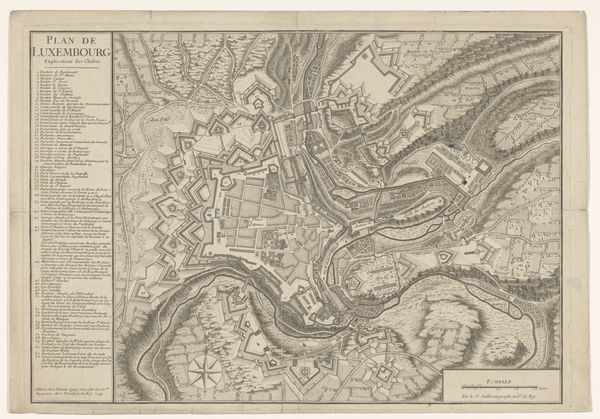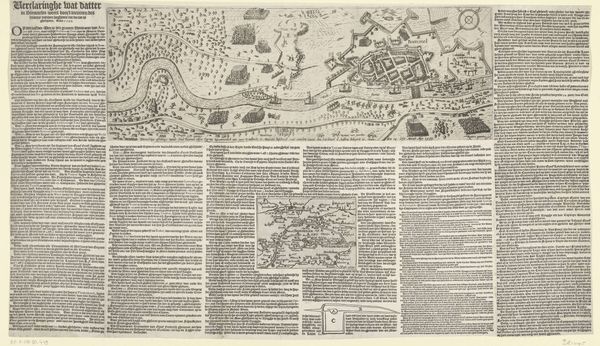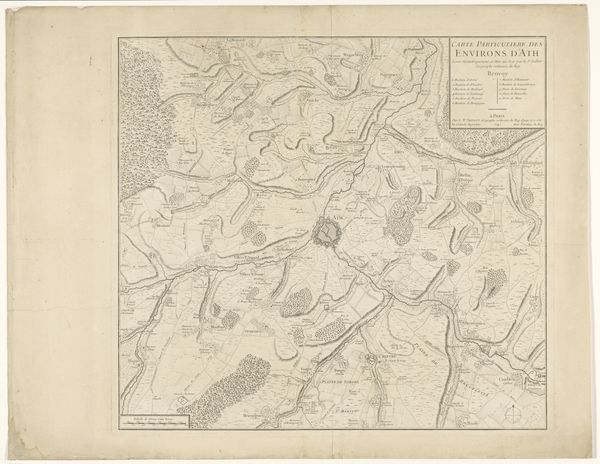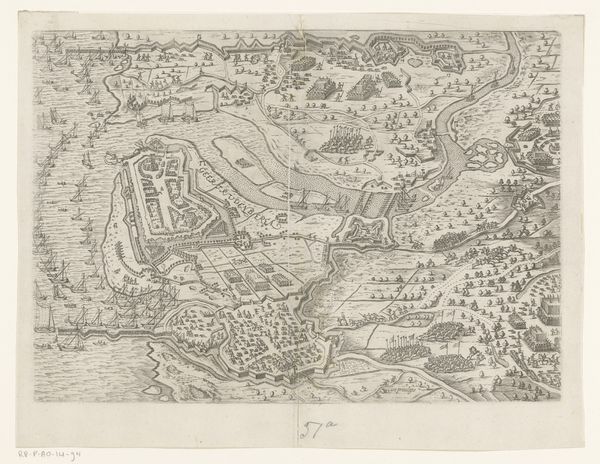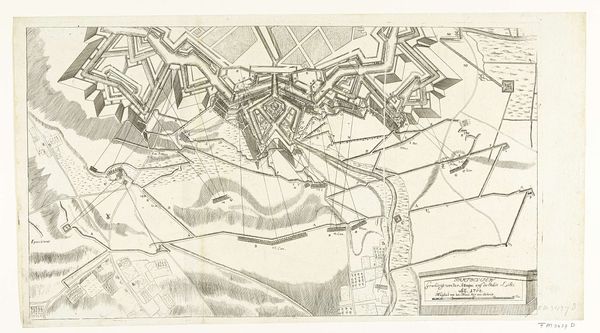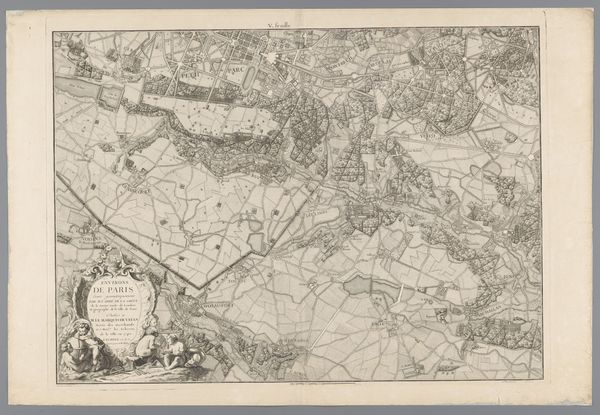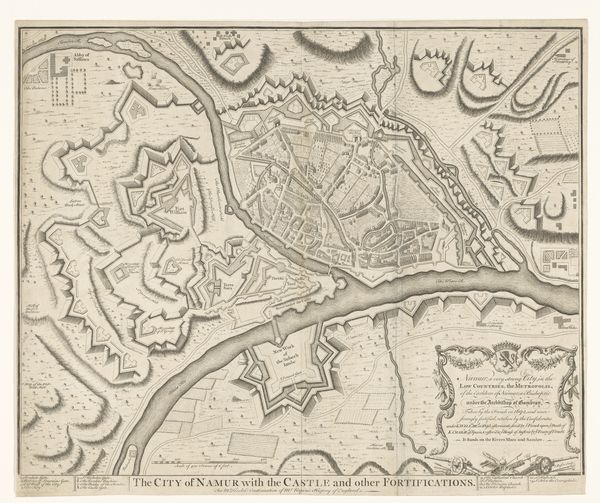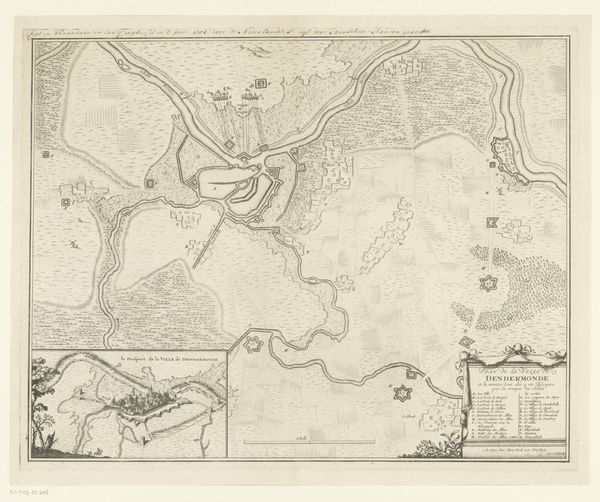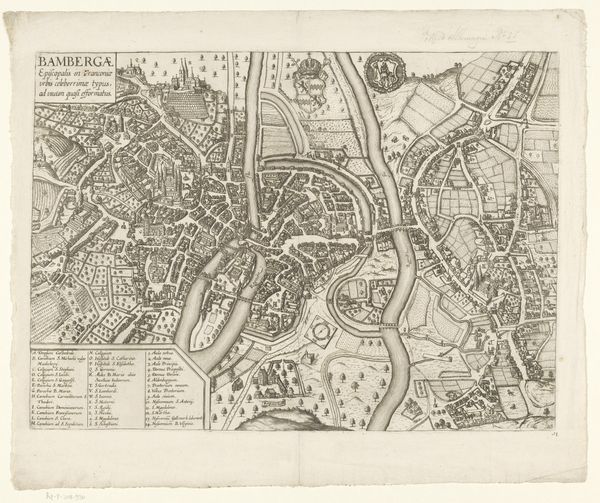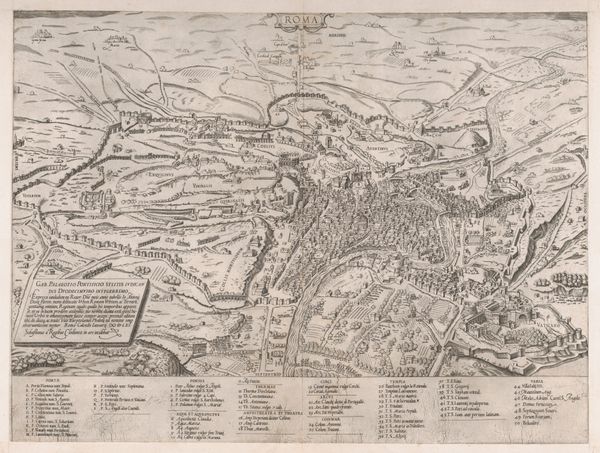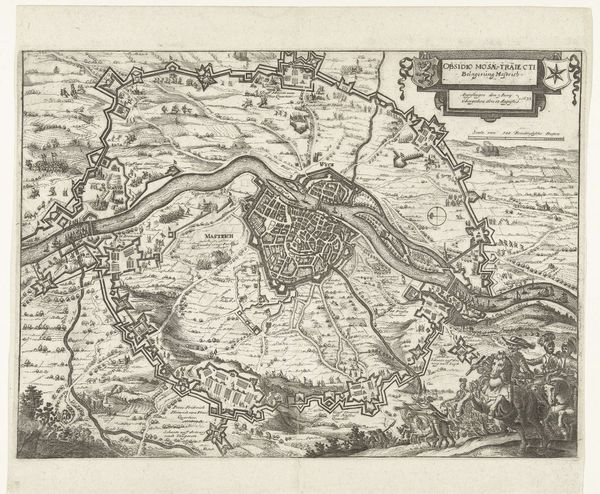
drawing, print, paper, ink, pen, engraving
#
drawing
# print
#
pen illustration
#
landscape
#
paper
#
ink line art
#
ink
#
pen
#
history-painting
#
engraving
Dimensions: height 480 mm, width 685 mm
Copyright: Rijks Museum: Open Domain
Editor: This pen and ink drawing from the late 17th or early 18th century, titled "Kaart van de slag bij Seneffe, 1674", maps out a historical battle scene. It's incredibly detailed, but almost feels abstract in its rendering. What strikes you most about it? Curator: What immediately grabs me is the way it visualizes conflict, not as glorious triumph, but as a form of spatial organization. The drawing is as much about territory and control as it is about military strategy. We can explore how it presents the battle within a specific power dynamic. Who commissioned it, and what narrative were they trying to construct about the conflict and their place in it? Editor: That’s fascinating! I hadn’t considered the commission itself as a form of control. How would you say that perspective changes our interpretation? Curator: It challenges us to see beyond the mere depiction of a battle. Think about how maps historically served as instruments of colonial power, delineating ownership and suppressing indigenous knowledge. Was this map used to justify the battle, or perhaps to commemorate the losses incurred? Consider, too, how landscape and geography inevitably shape the experience of war and conflict. This artwork suggests how violence imprints itself onto the land. Editor: So it's not just about who won or lost, but also about the lasting impact of conflict. It makes you think about the environment. Curator: Precisely. This work is less a straightforward historical document and more of an invitation to consider the multilayered, often invisible, ways that power operates in shaping our world. Editor: I see the image very differently now. It prompts a wider view, extending far beyond troop movements. Thanks for sharing your view. Curator: And thank you for seeing its potential for raising these critical discussions. Hopefully, it will make listeners consider all art with that in mind.
Comments
No comments
Be the first to comment and join the conversation on the ultimate creative platform.
